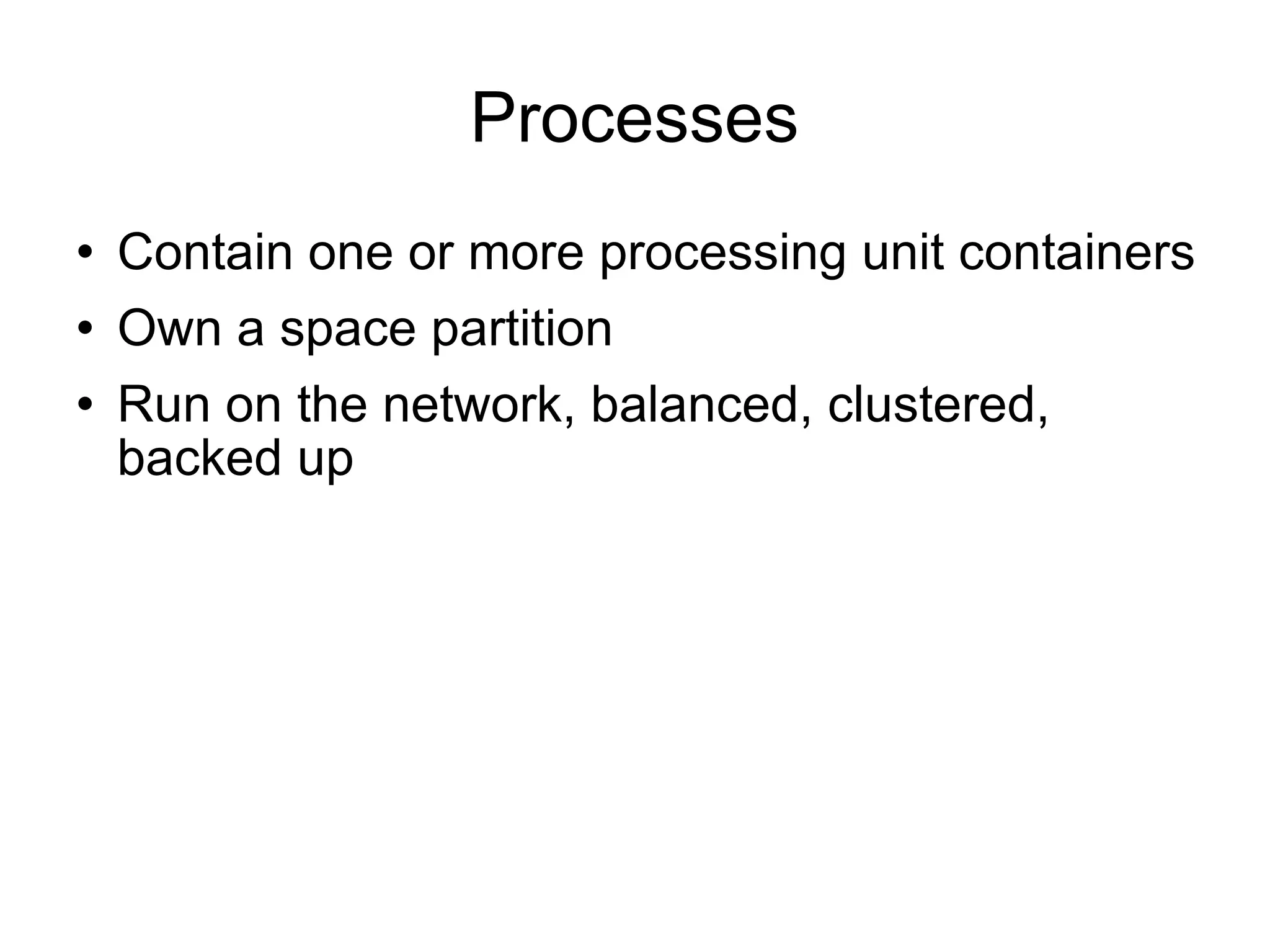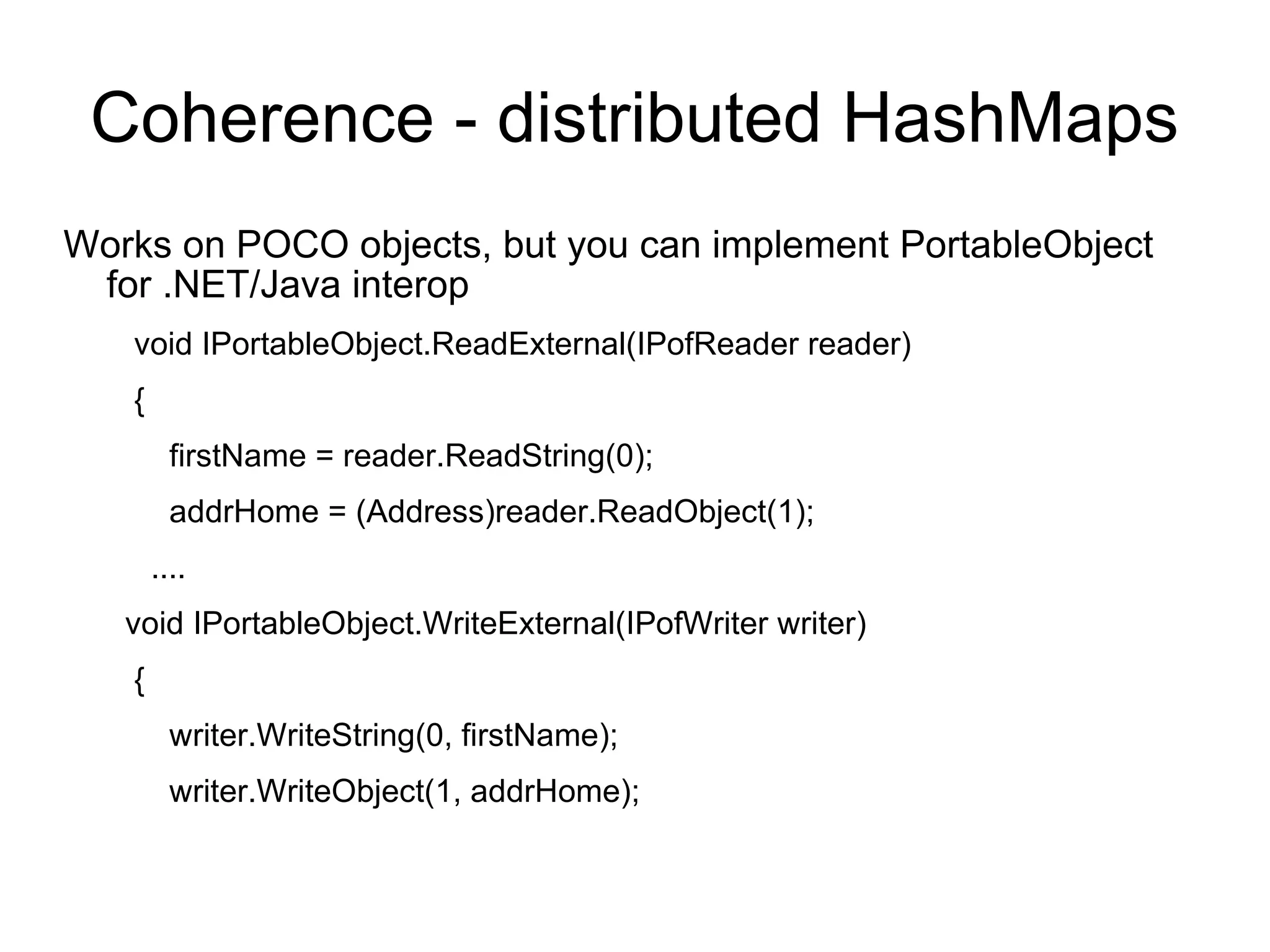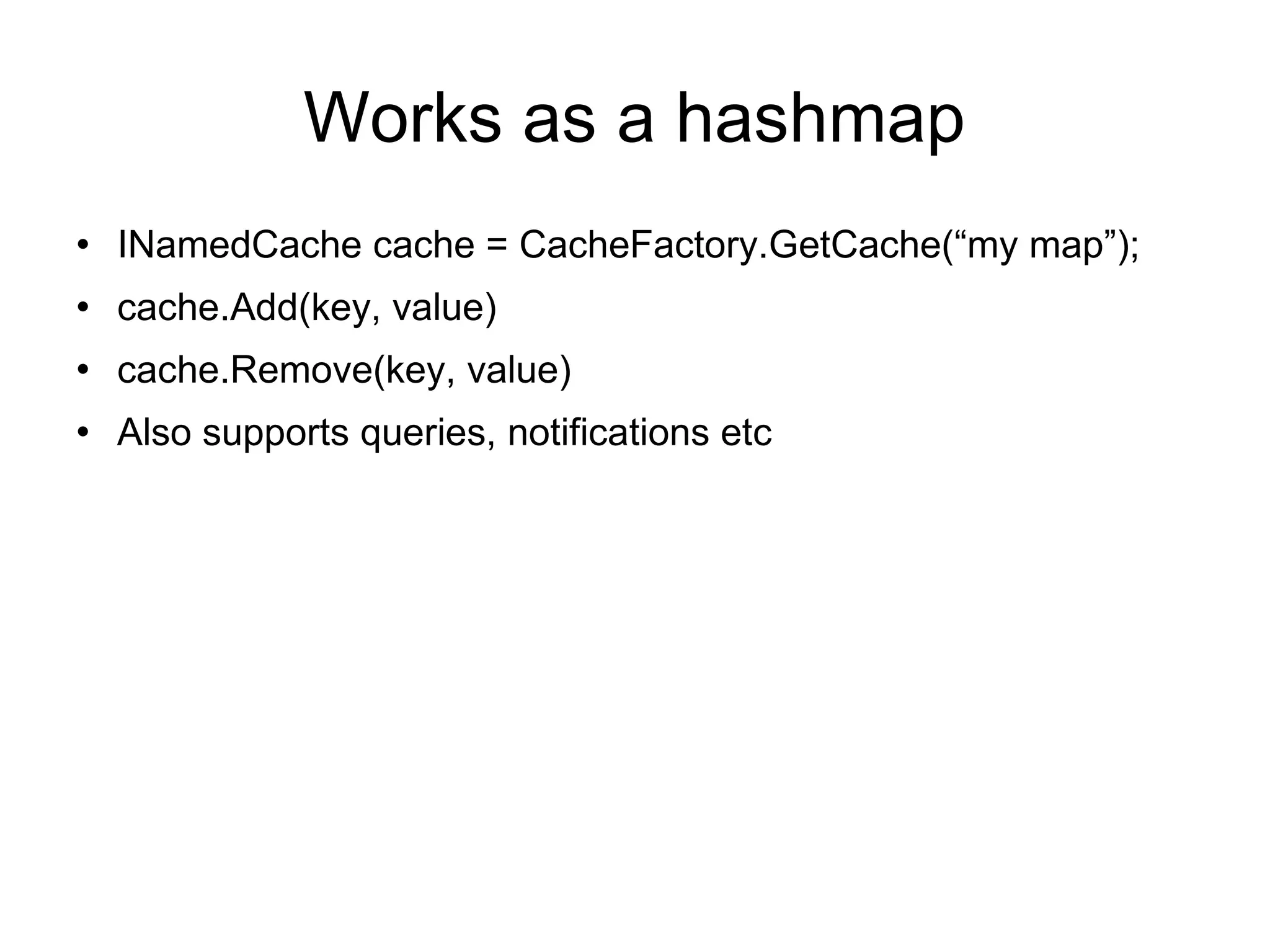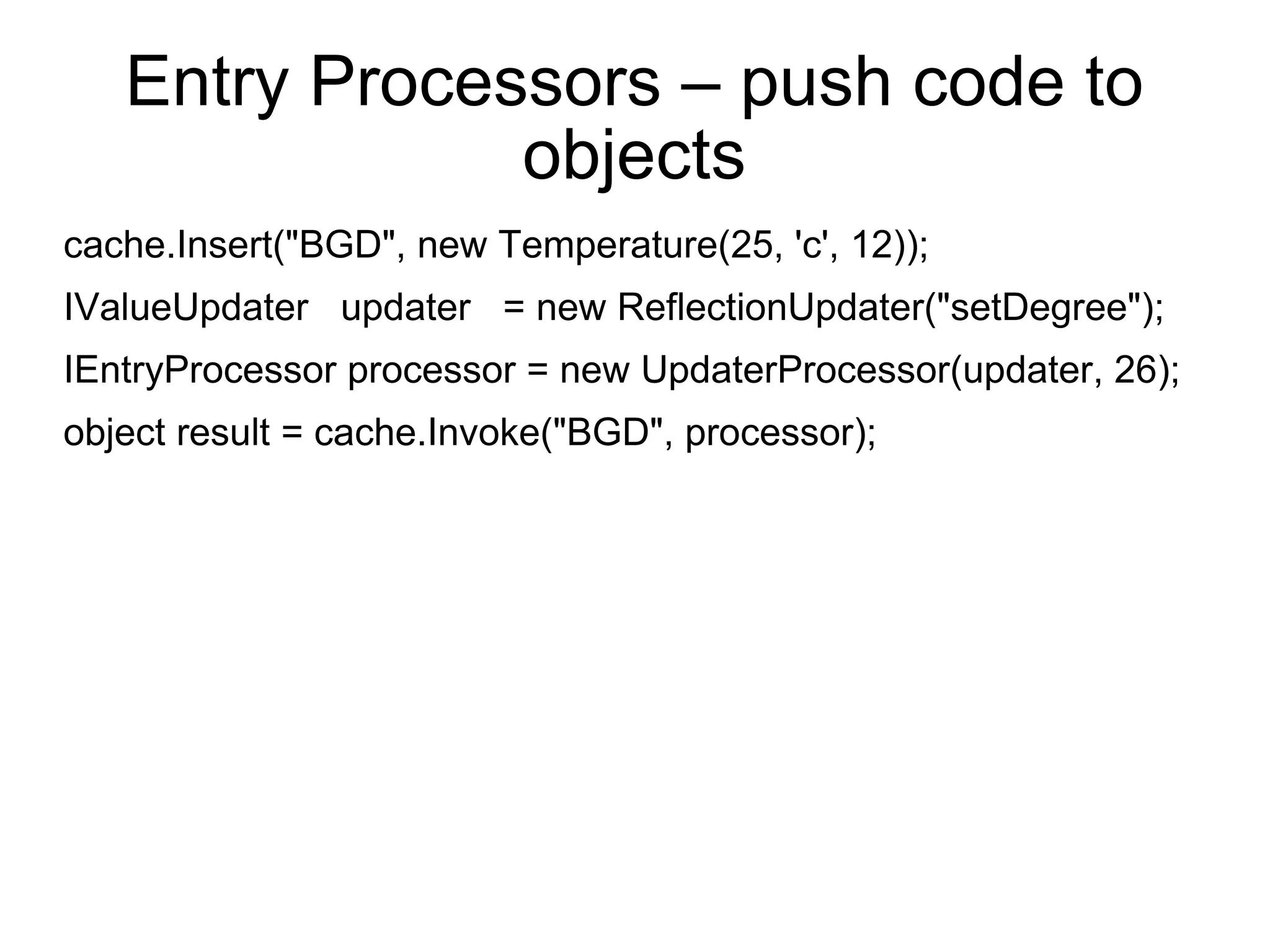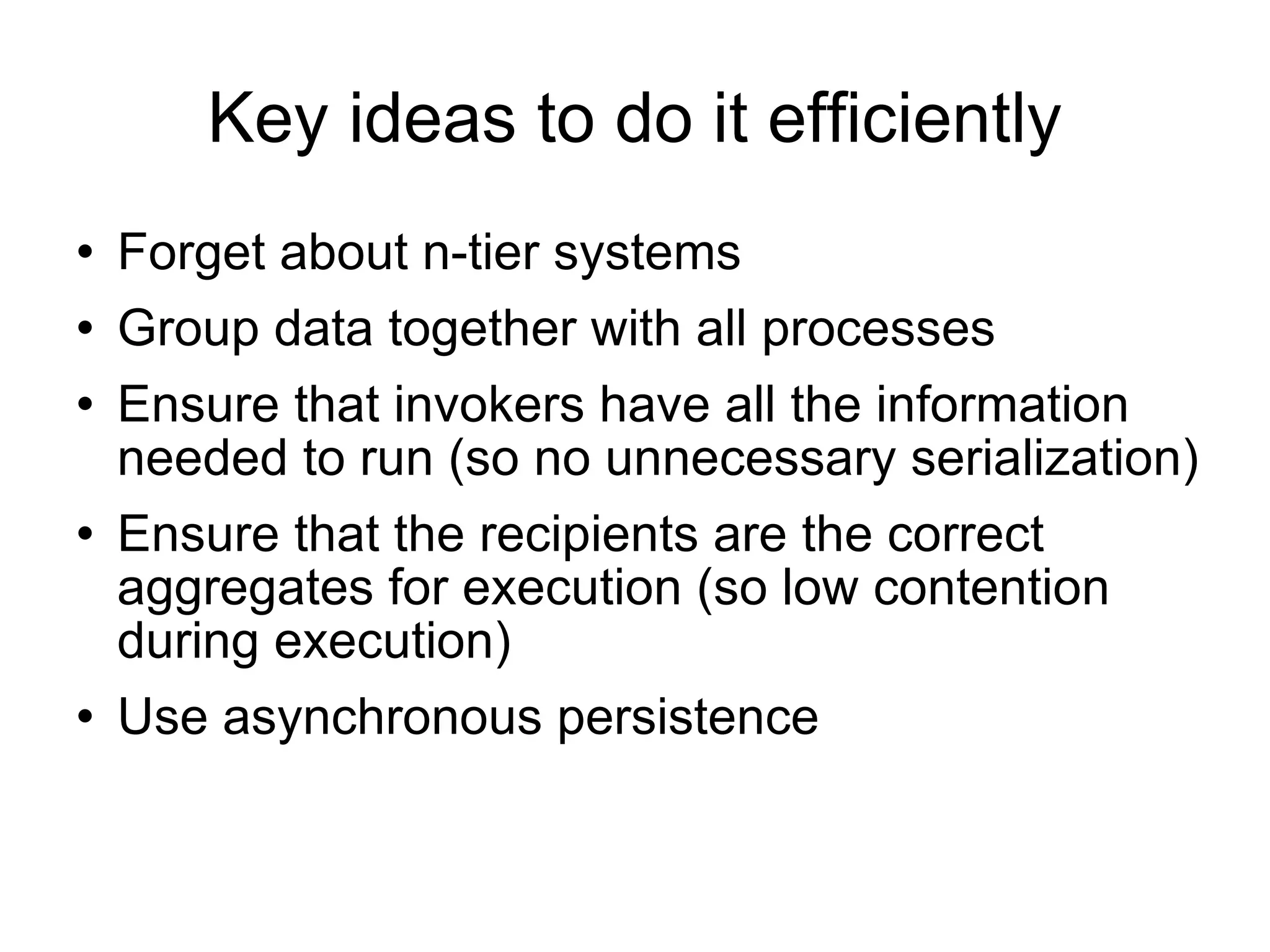The document discusses space-based programming and how it can help applications scale out across machines, grow and shrink dynamically, and handle large amounts of data and throughput. Spaces provide a way to store and access data objects across a network and allow tasks to be sent to objects to execute asynchronously. Examples of space-based systems that have been developed include Coherence, GigaSpaces, and TSpaces. The document outlines how spaces can be used with the command pattern to delegate and sequence method calls across processing units in a scalable way.
![Space based programming [email_address] @gojkoadzic http://gojko.net](https://image.slidesharecdn.com/spacebasedarch-090902155825-phpapp02/75/Space-Based-Programming-1-2048.jpg)
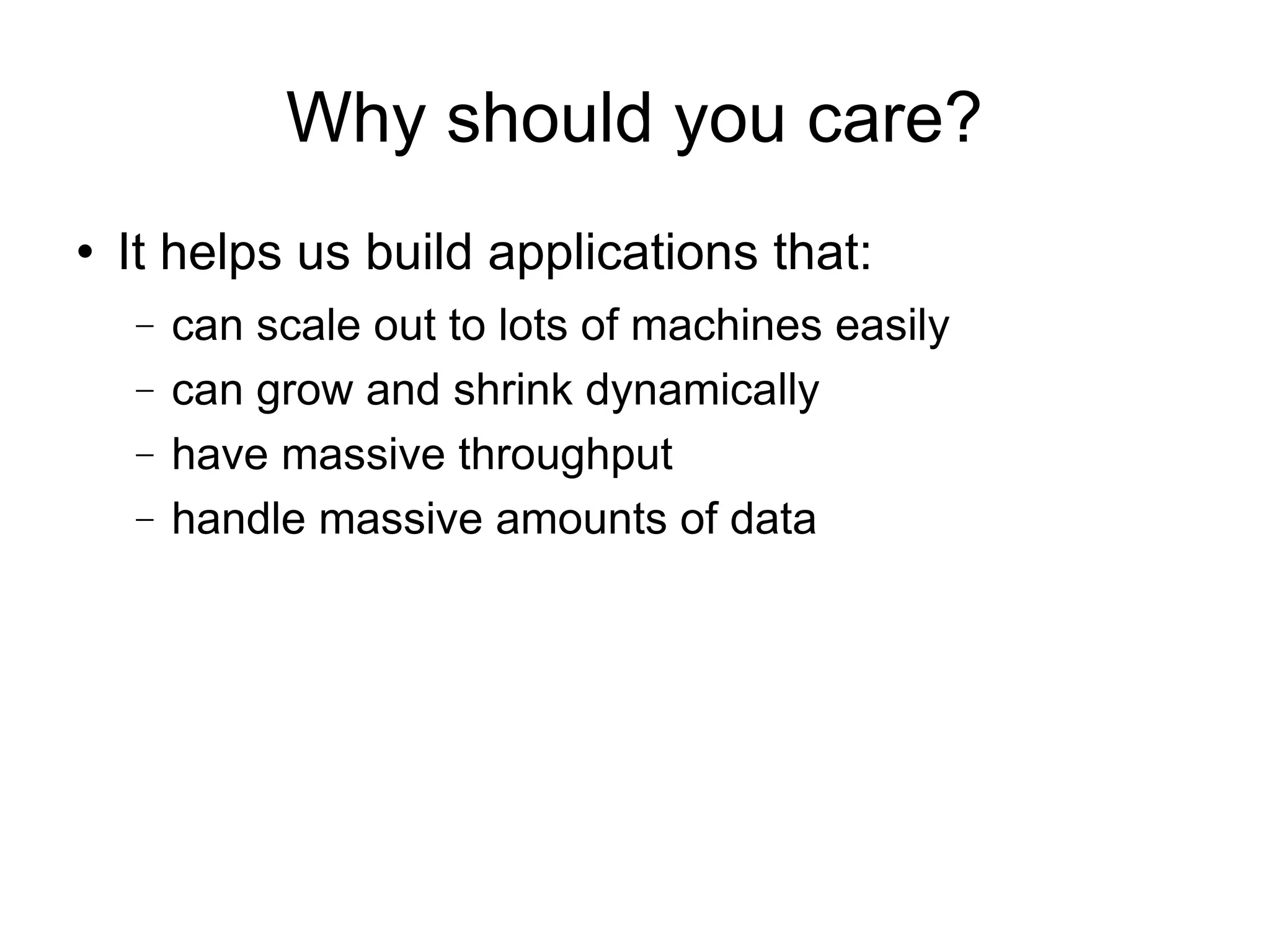
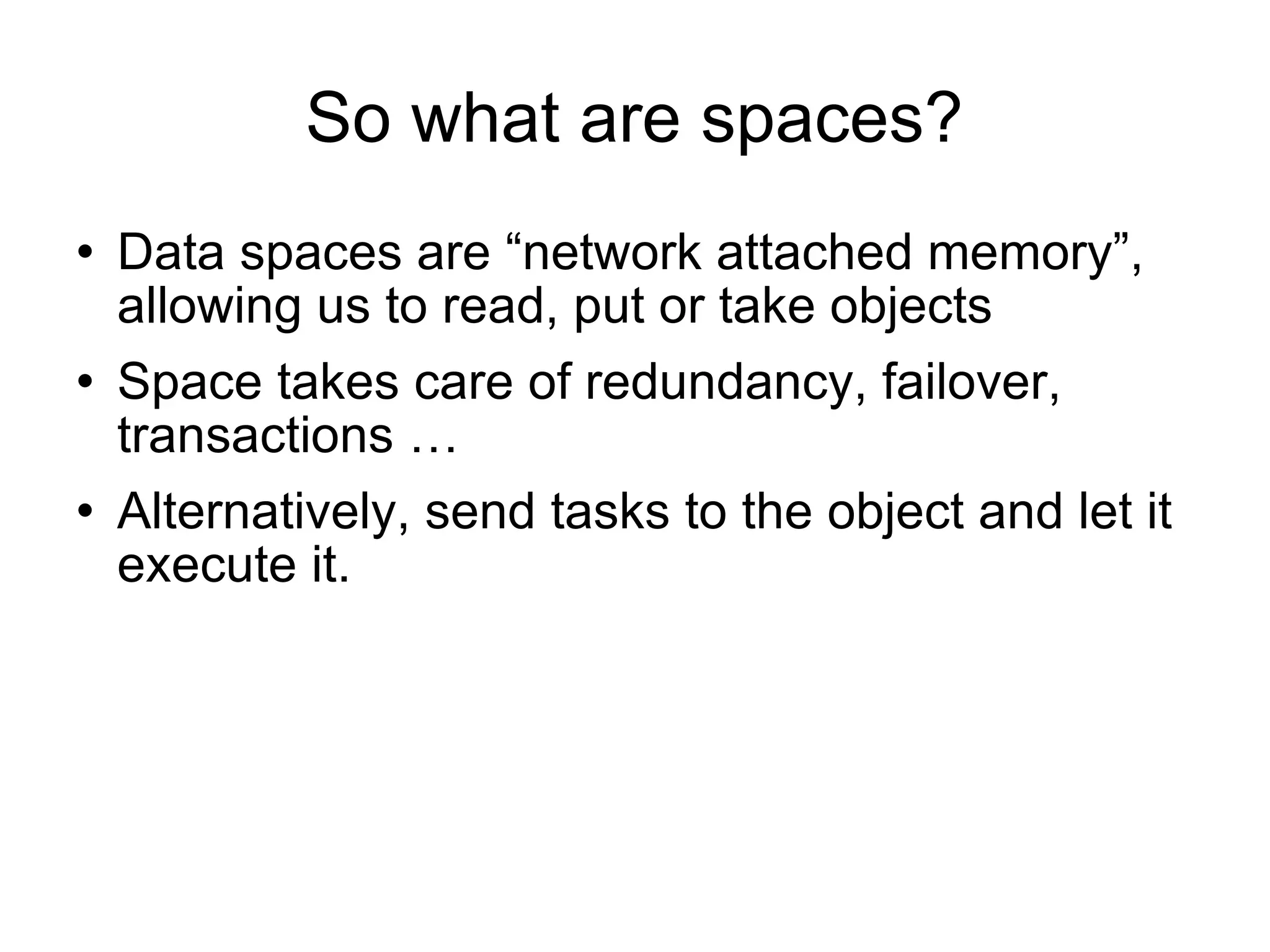

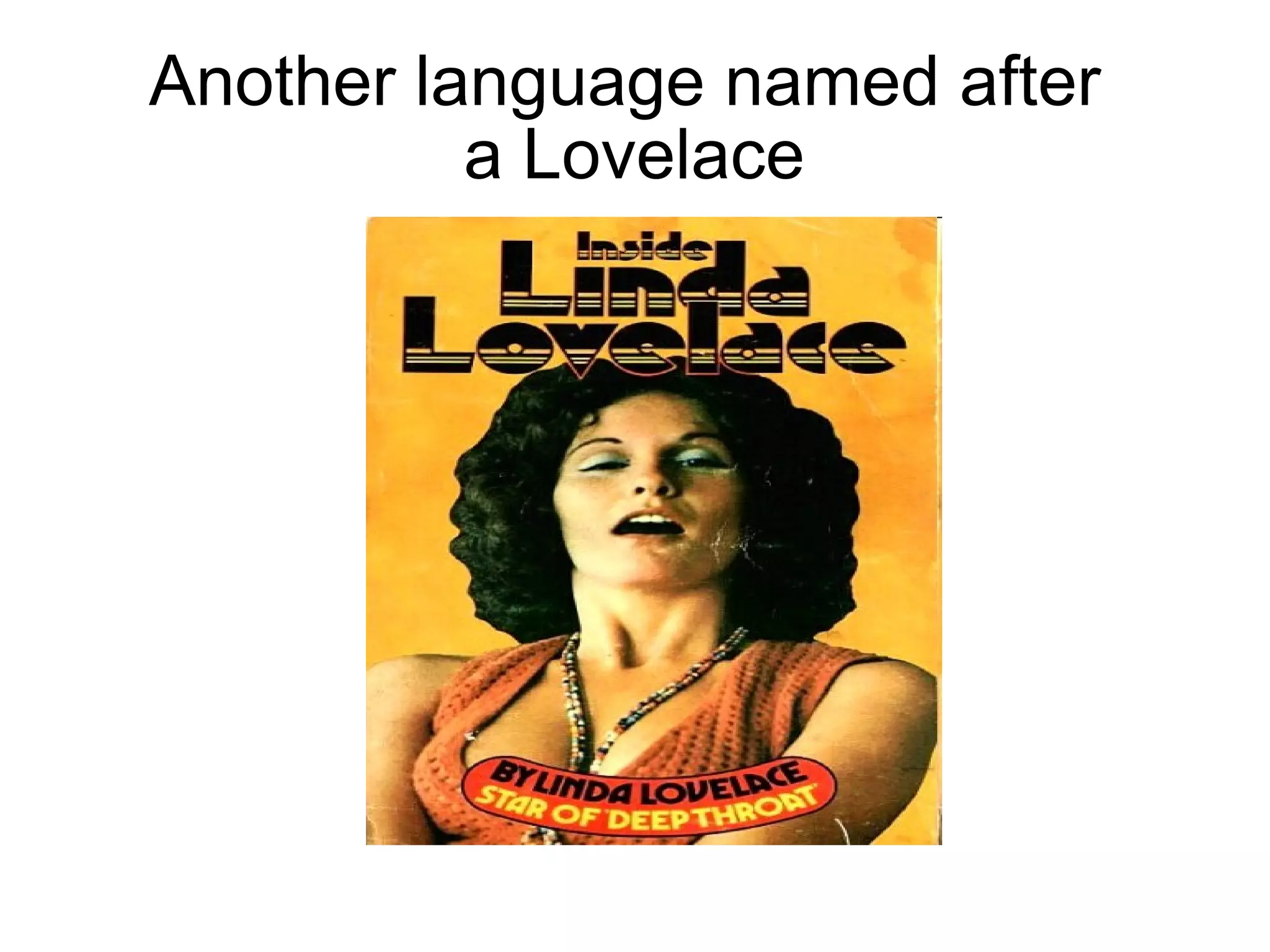
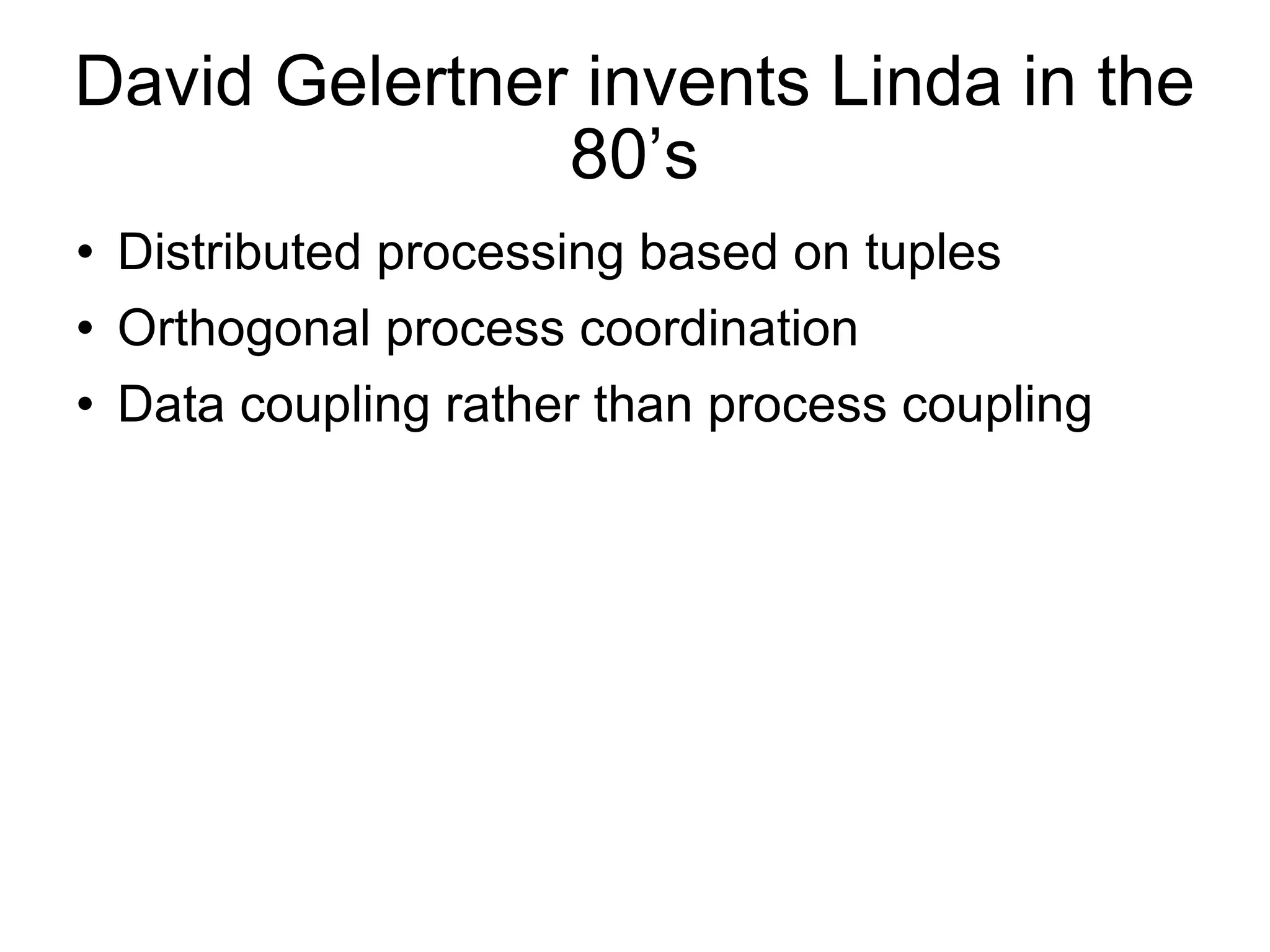
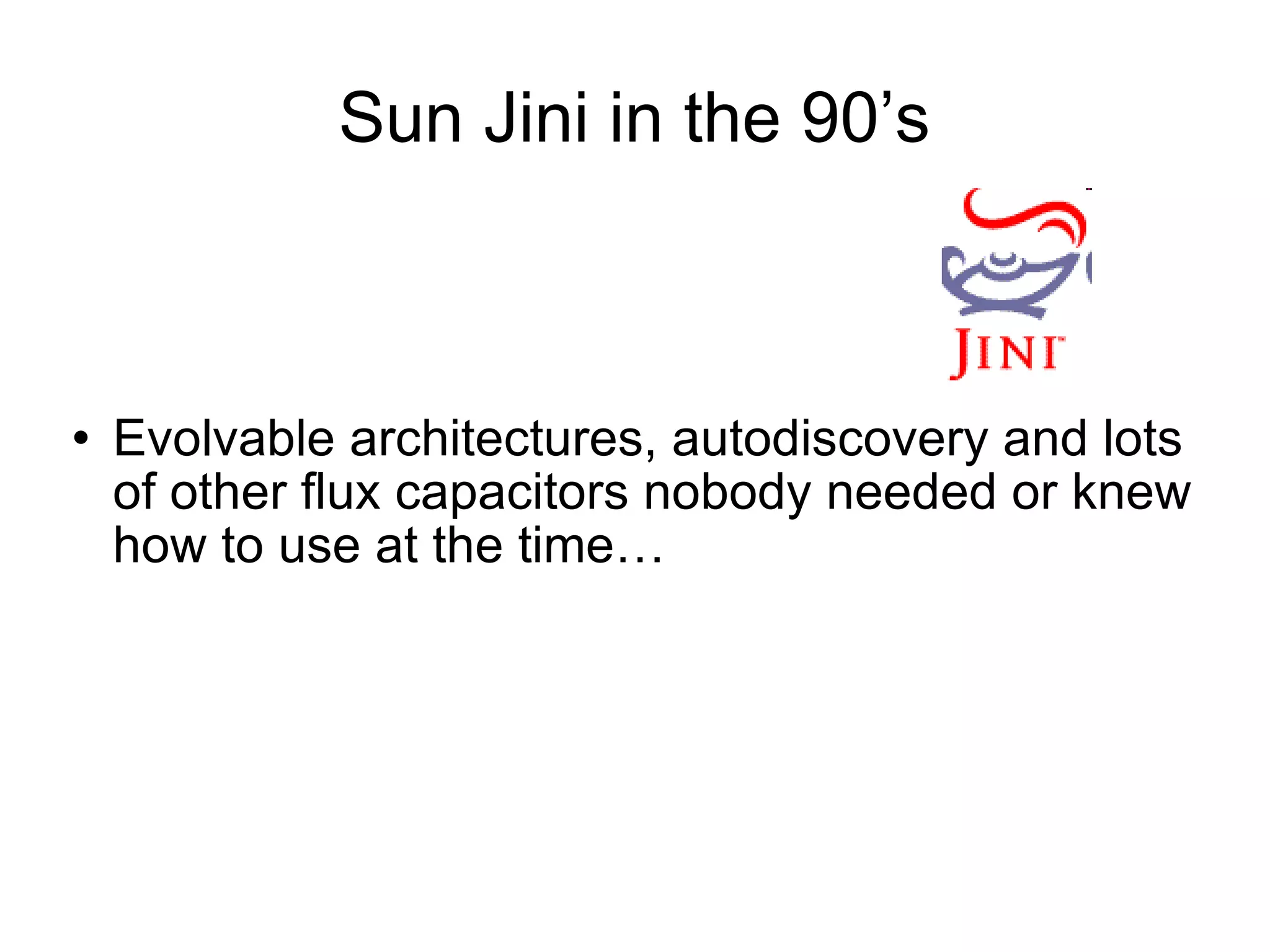
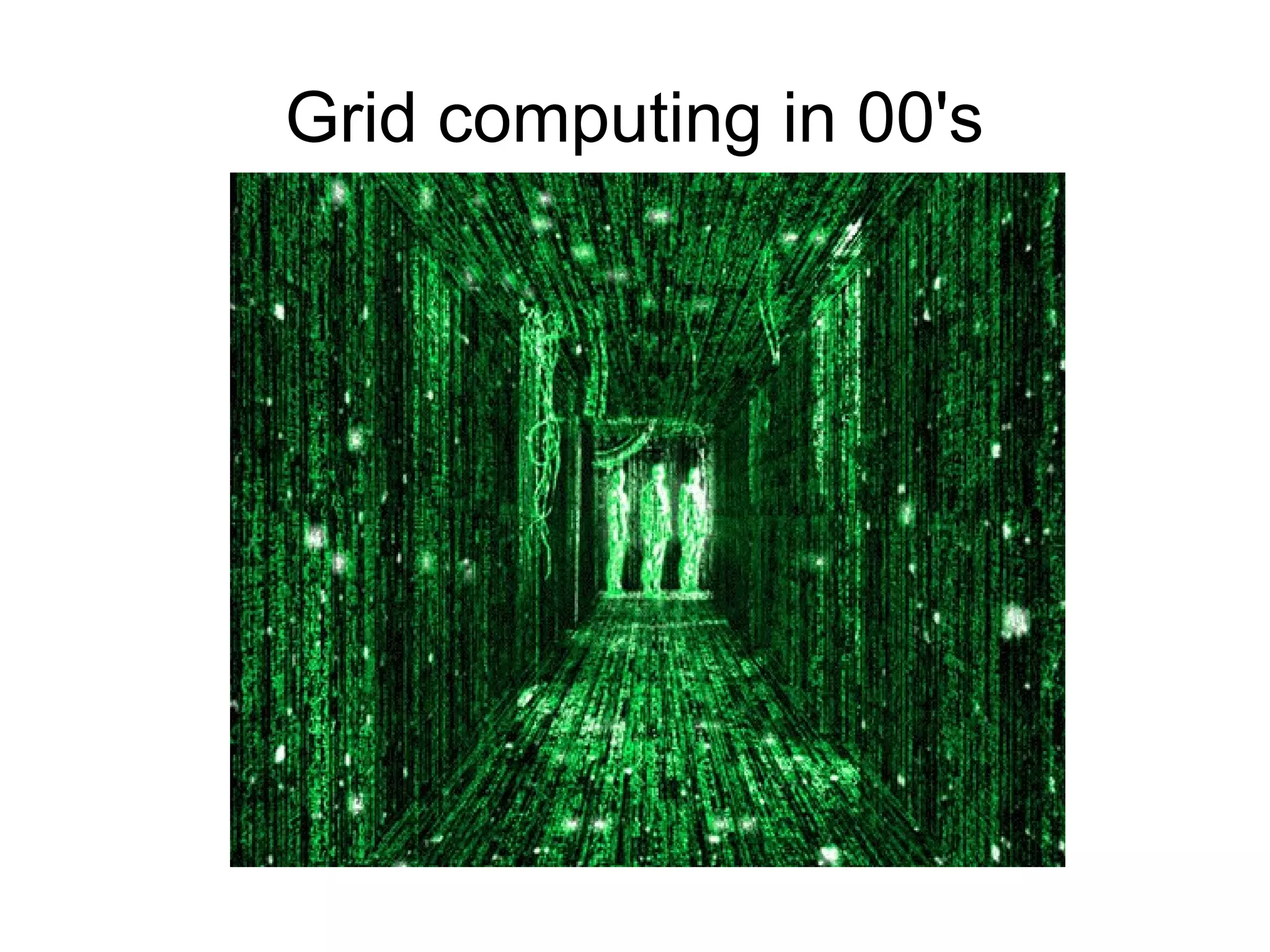
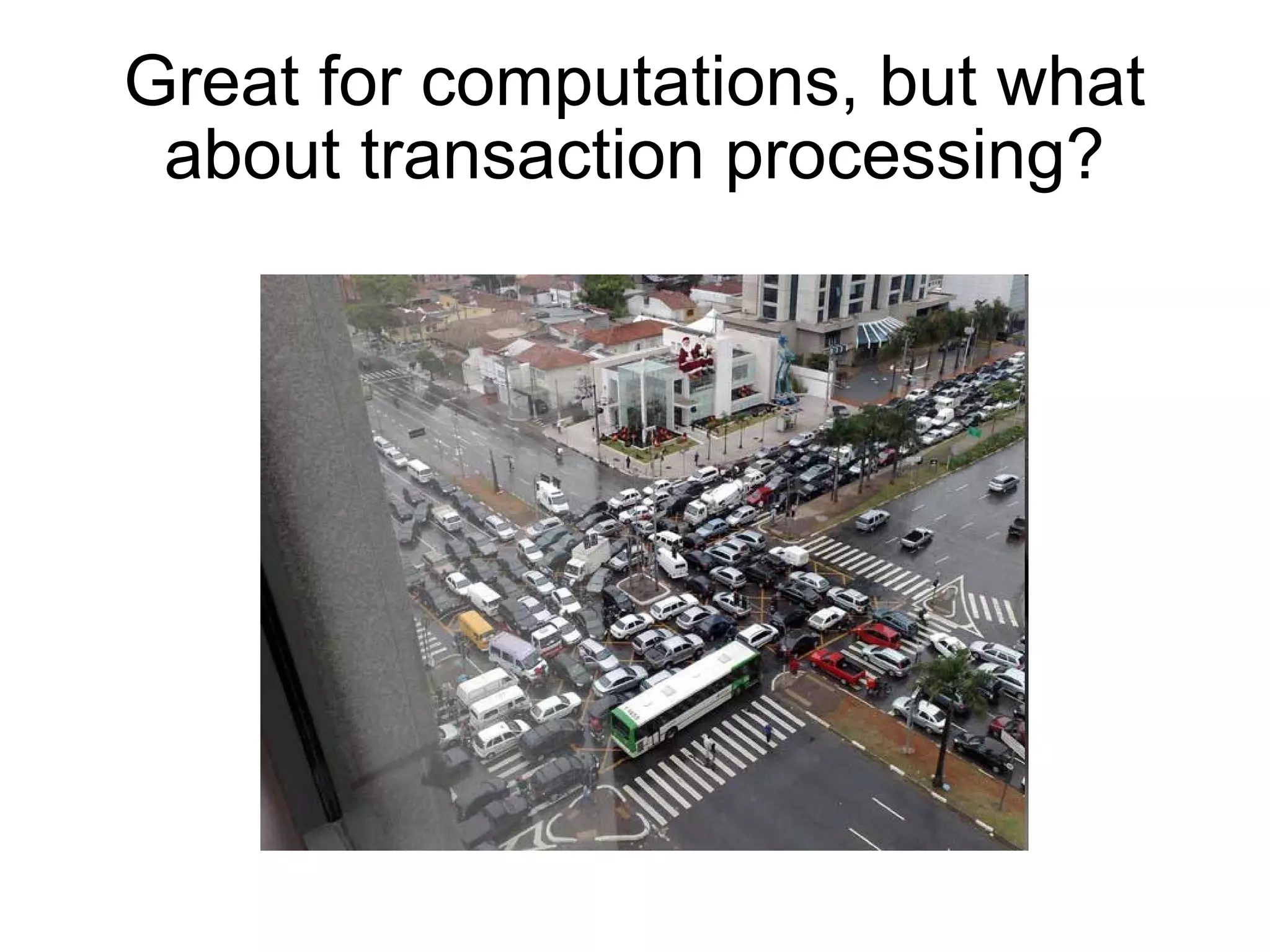
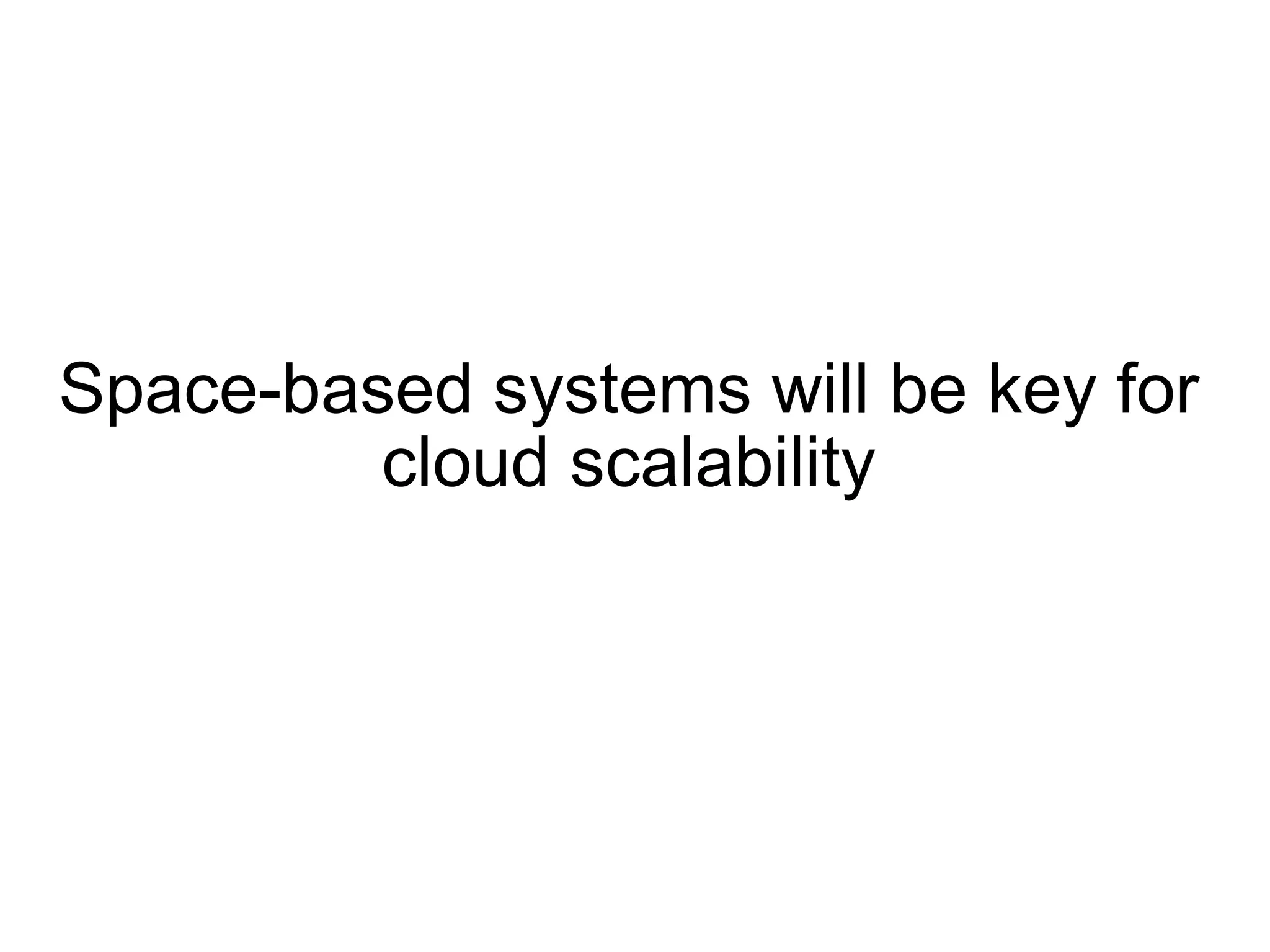
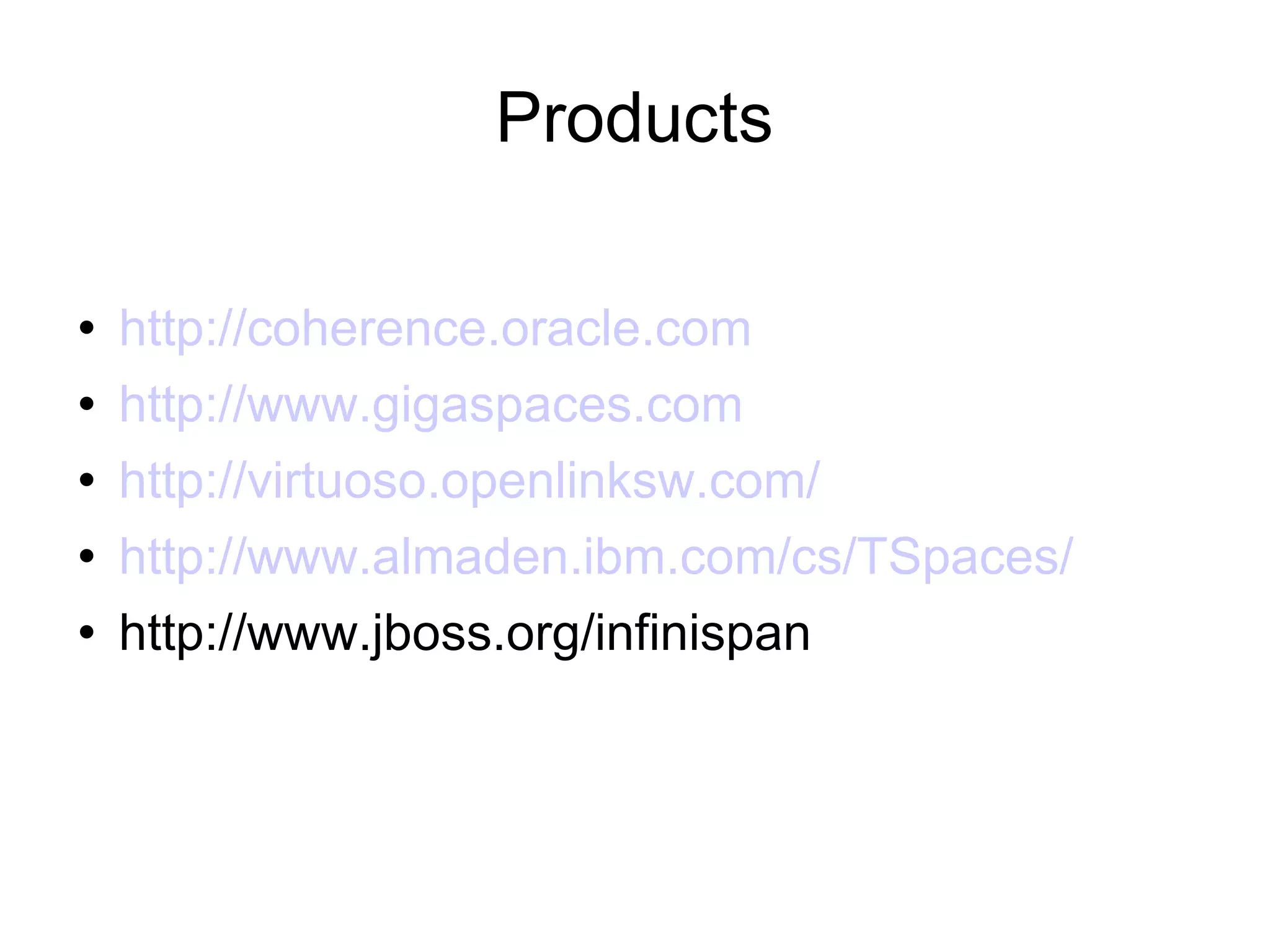
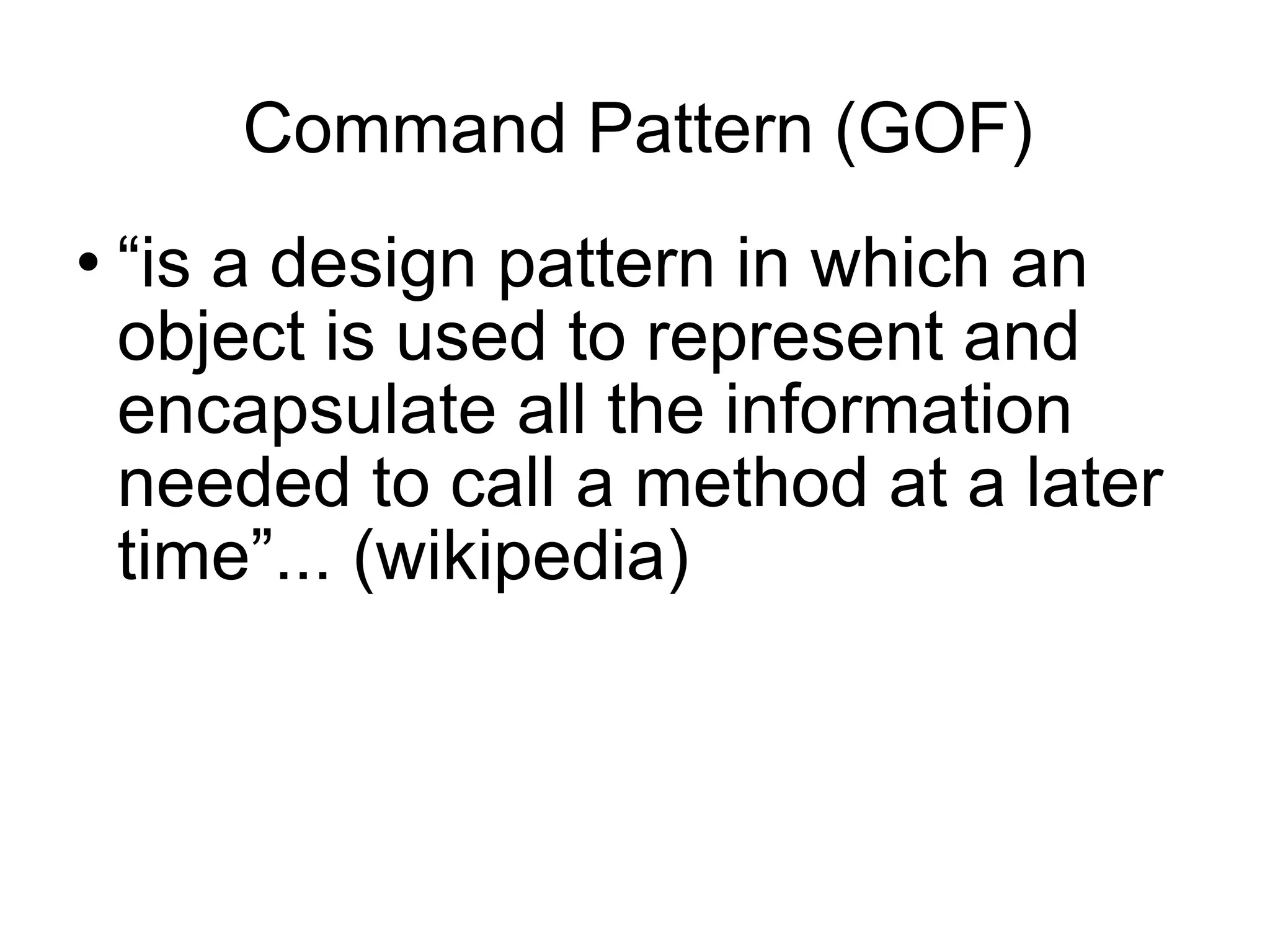
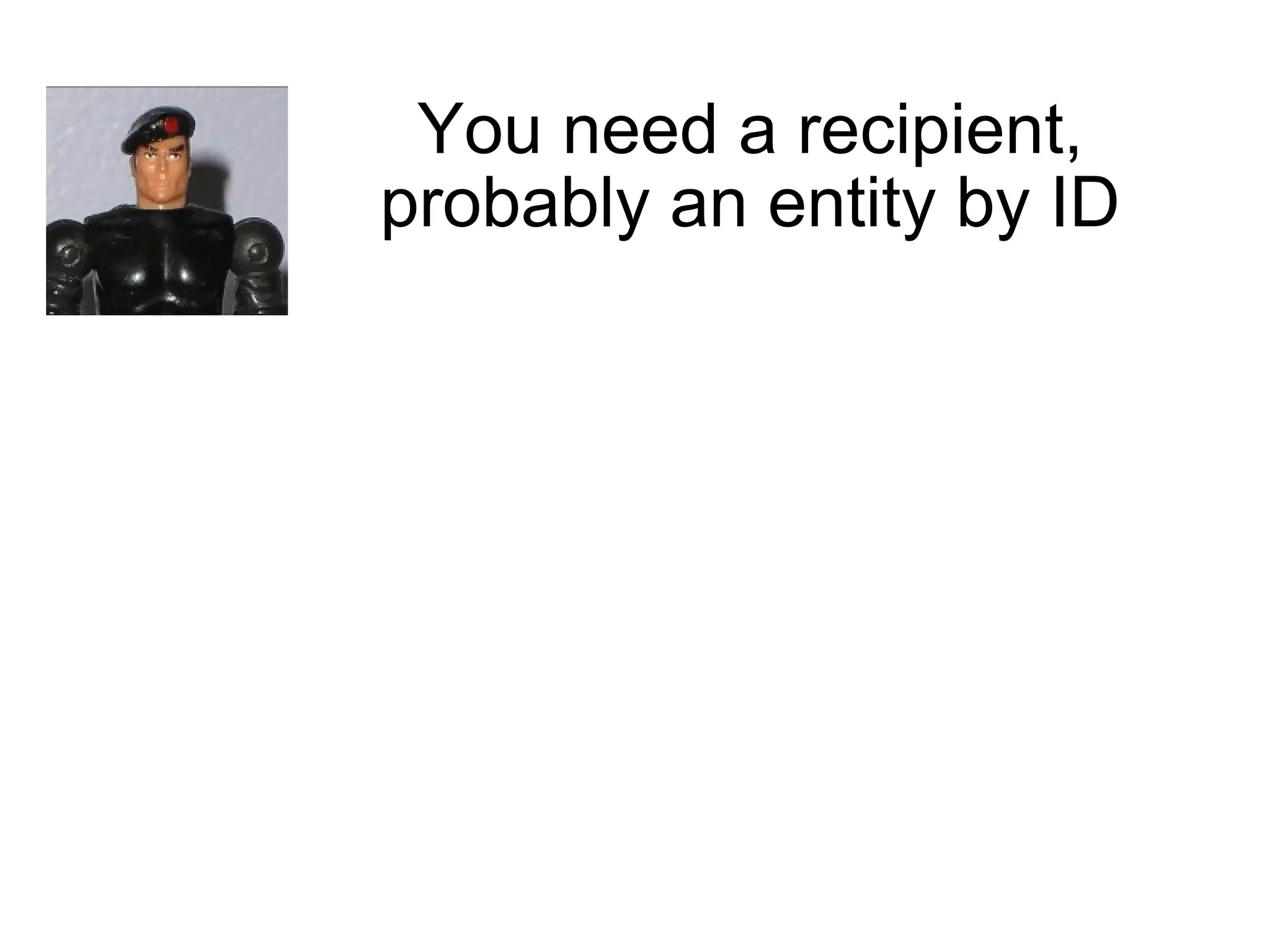

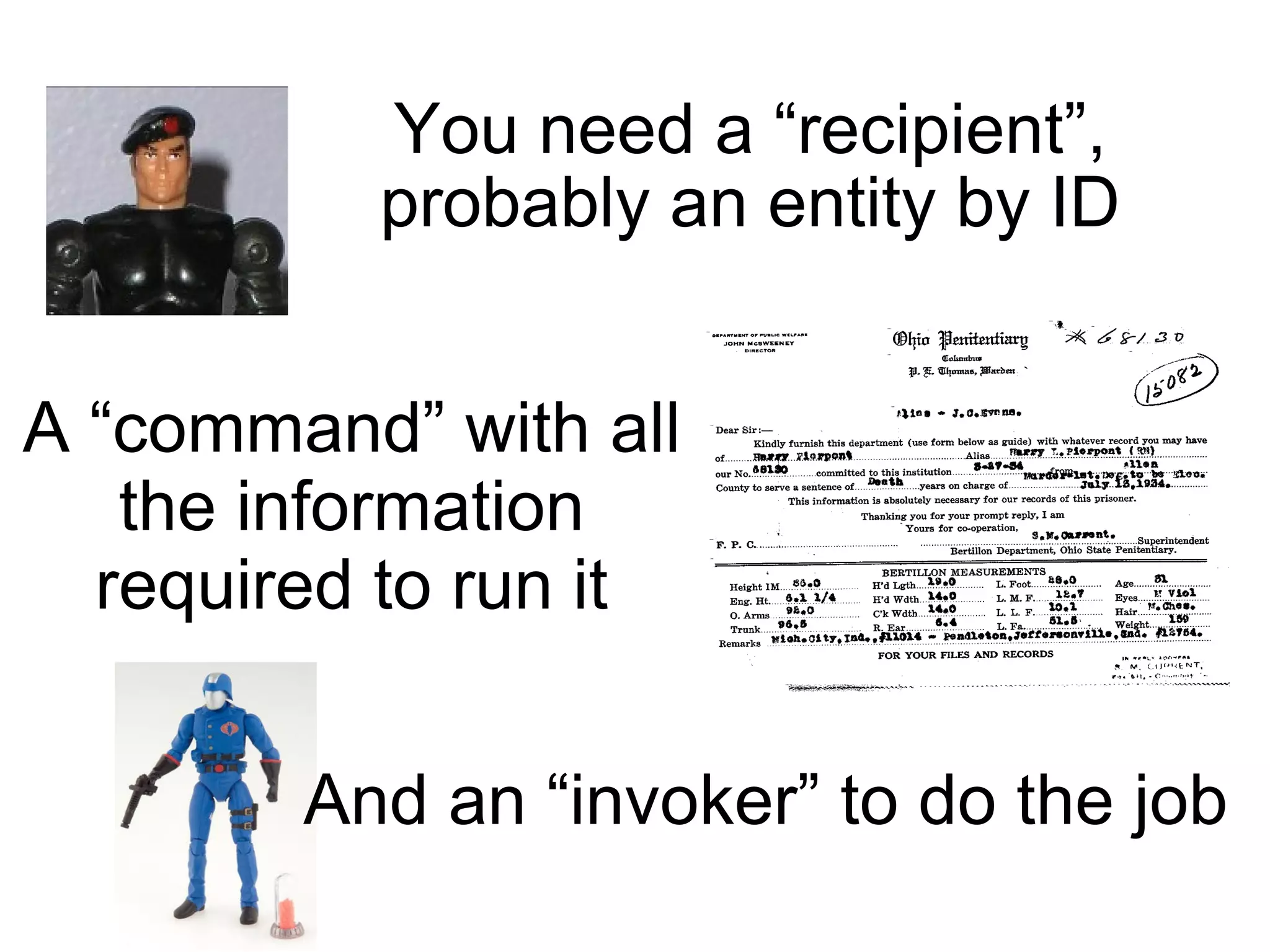
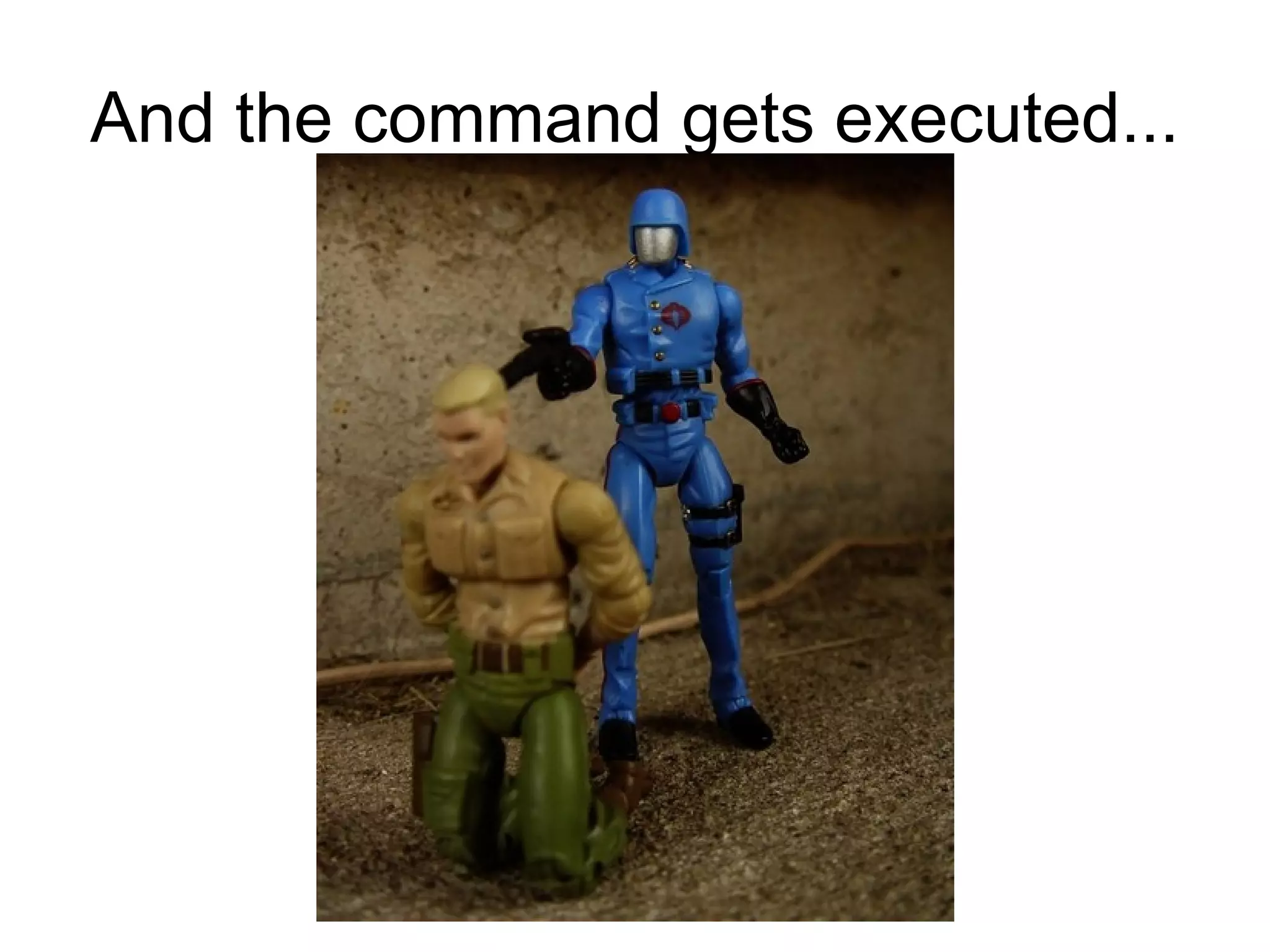
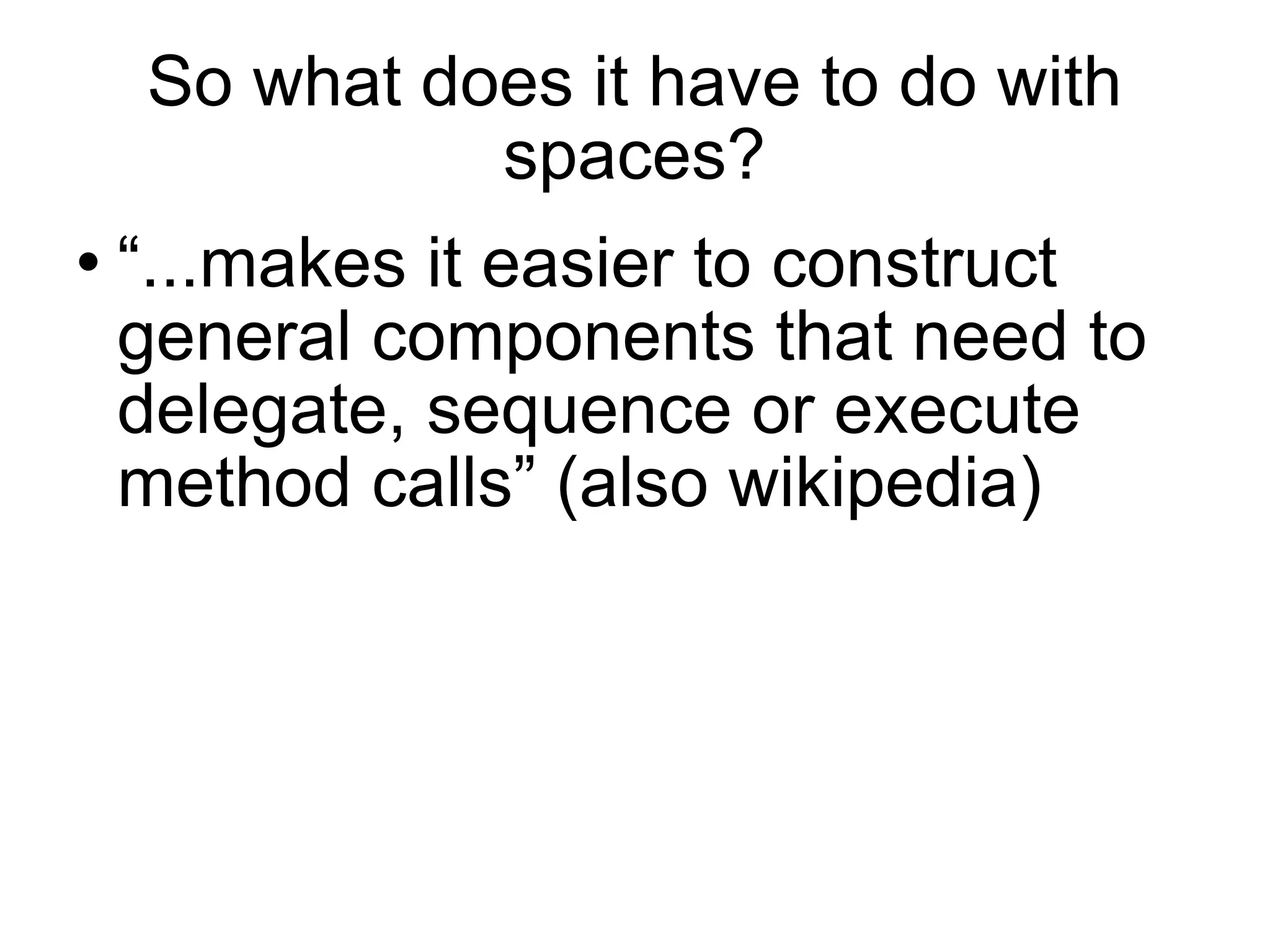
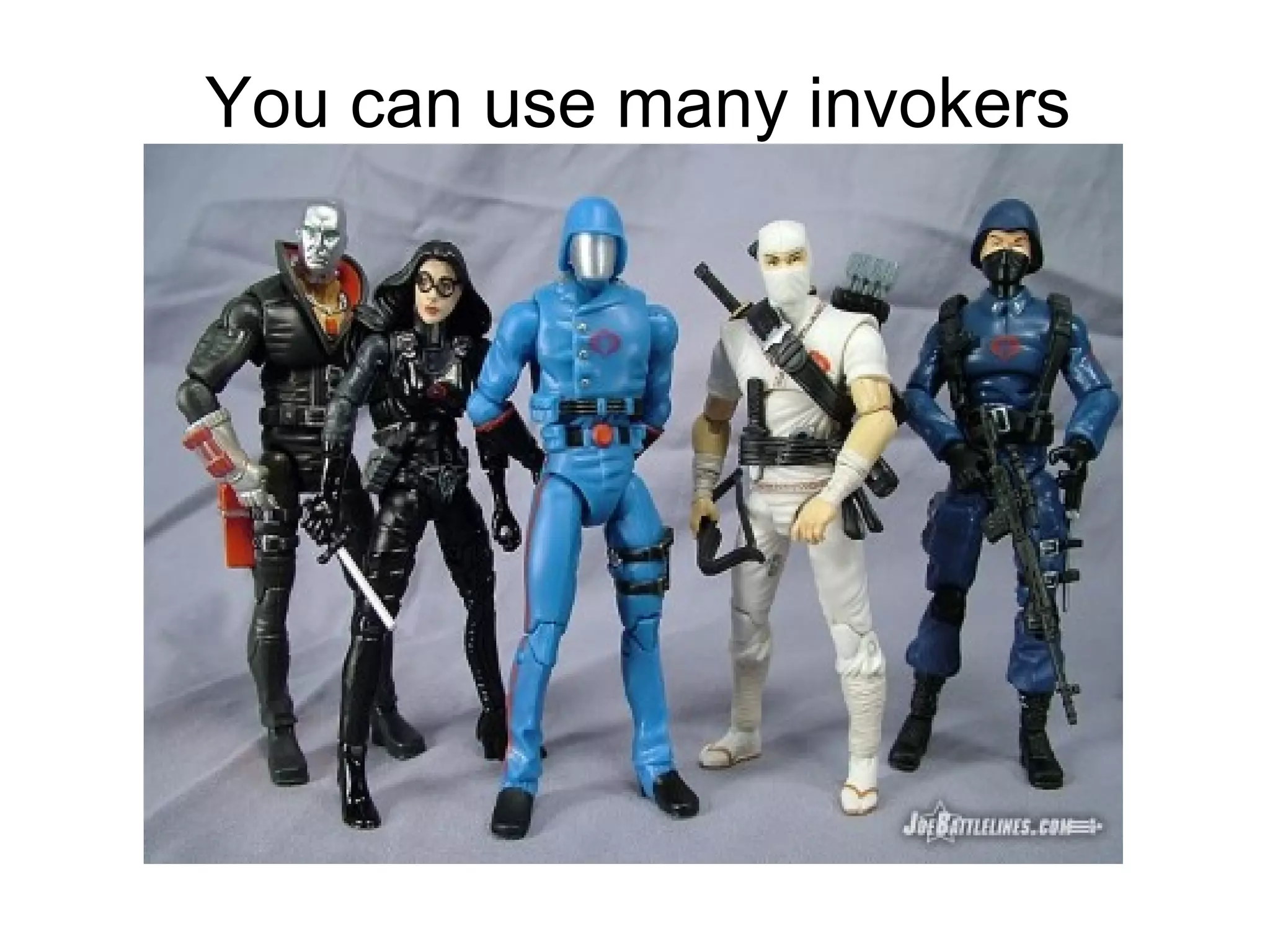
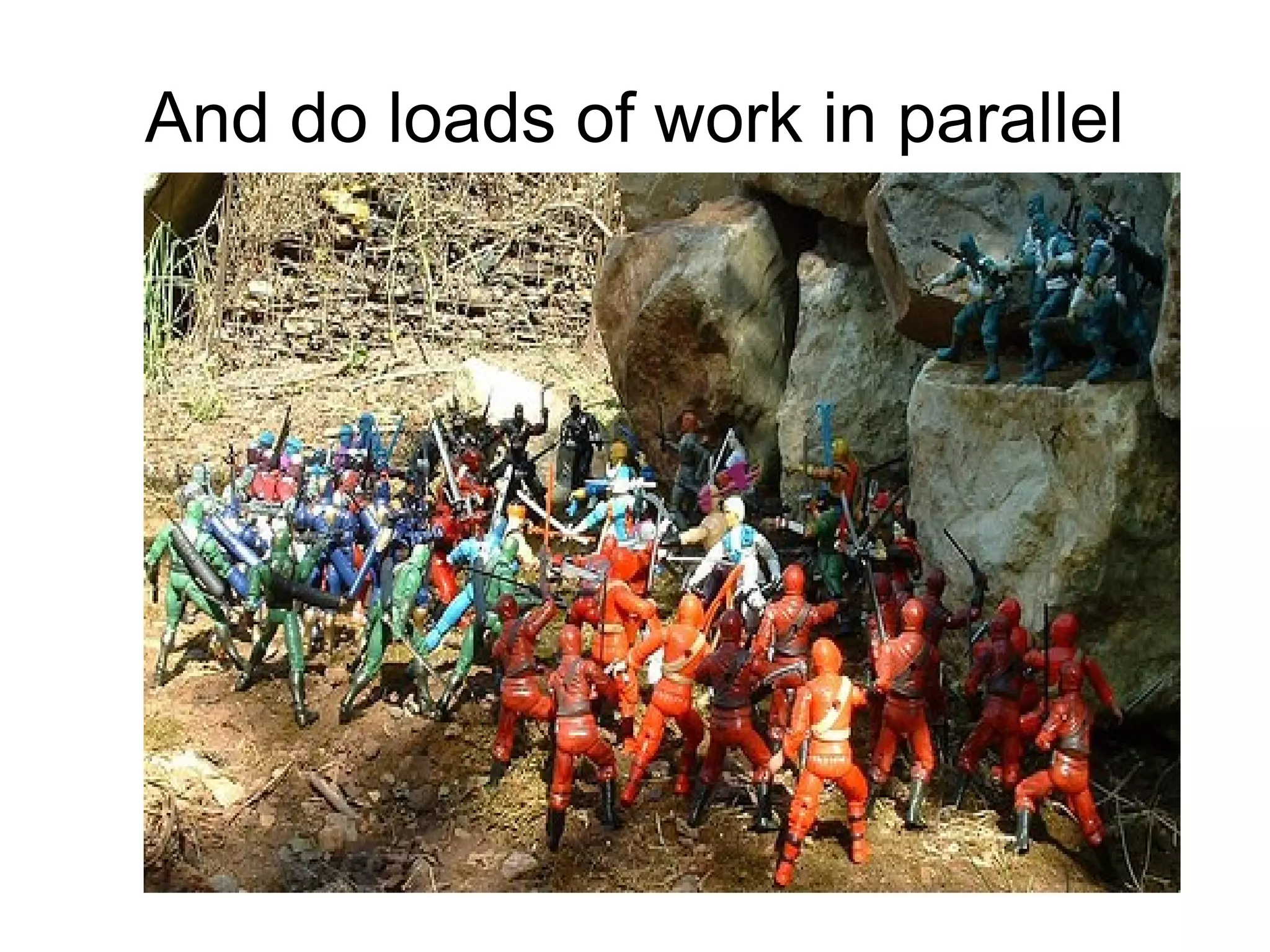

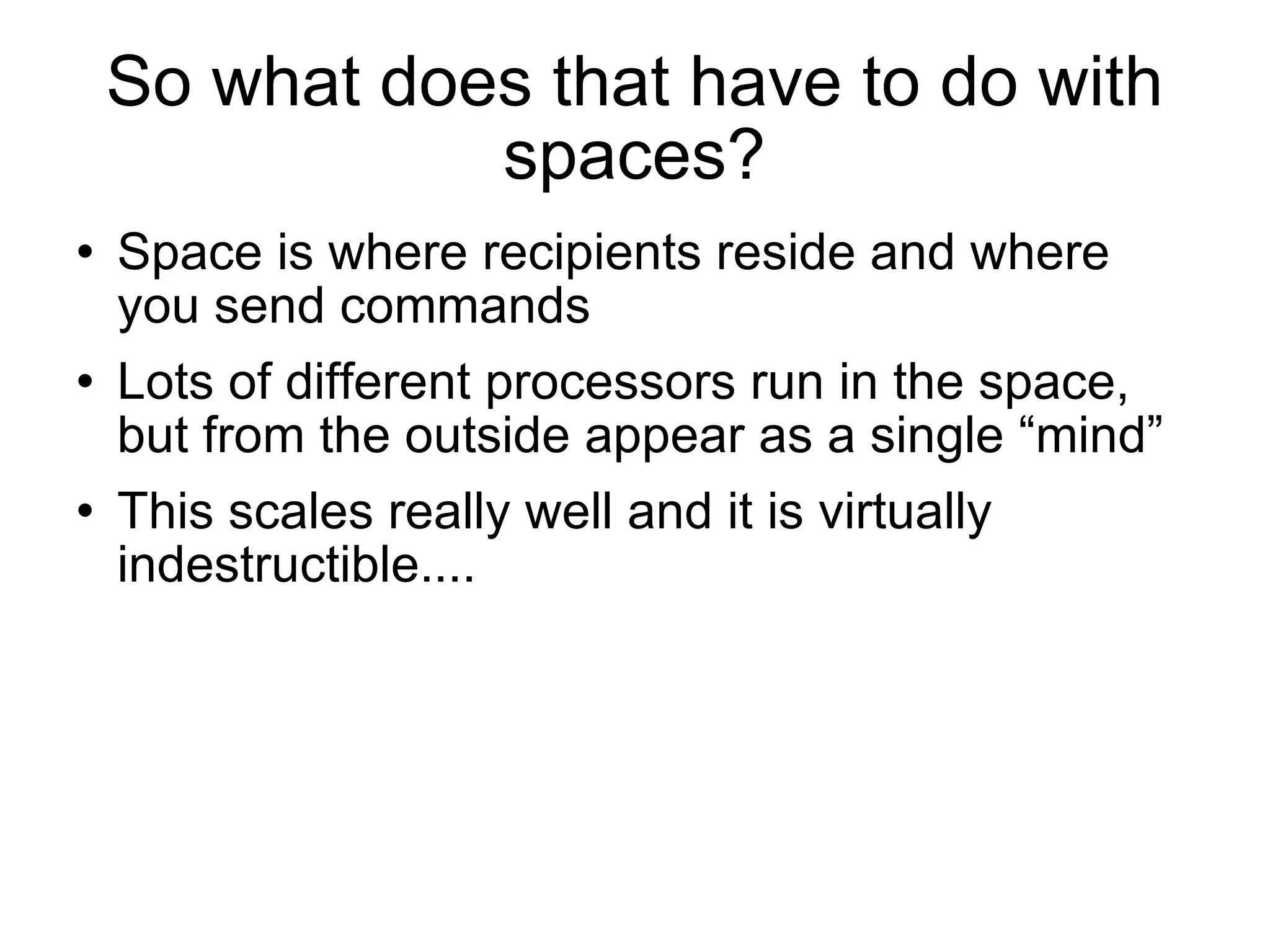
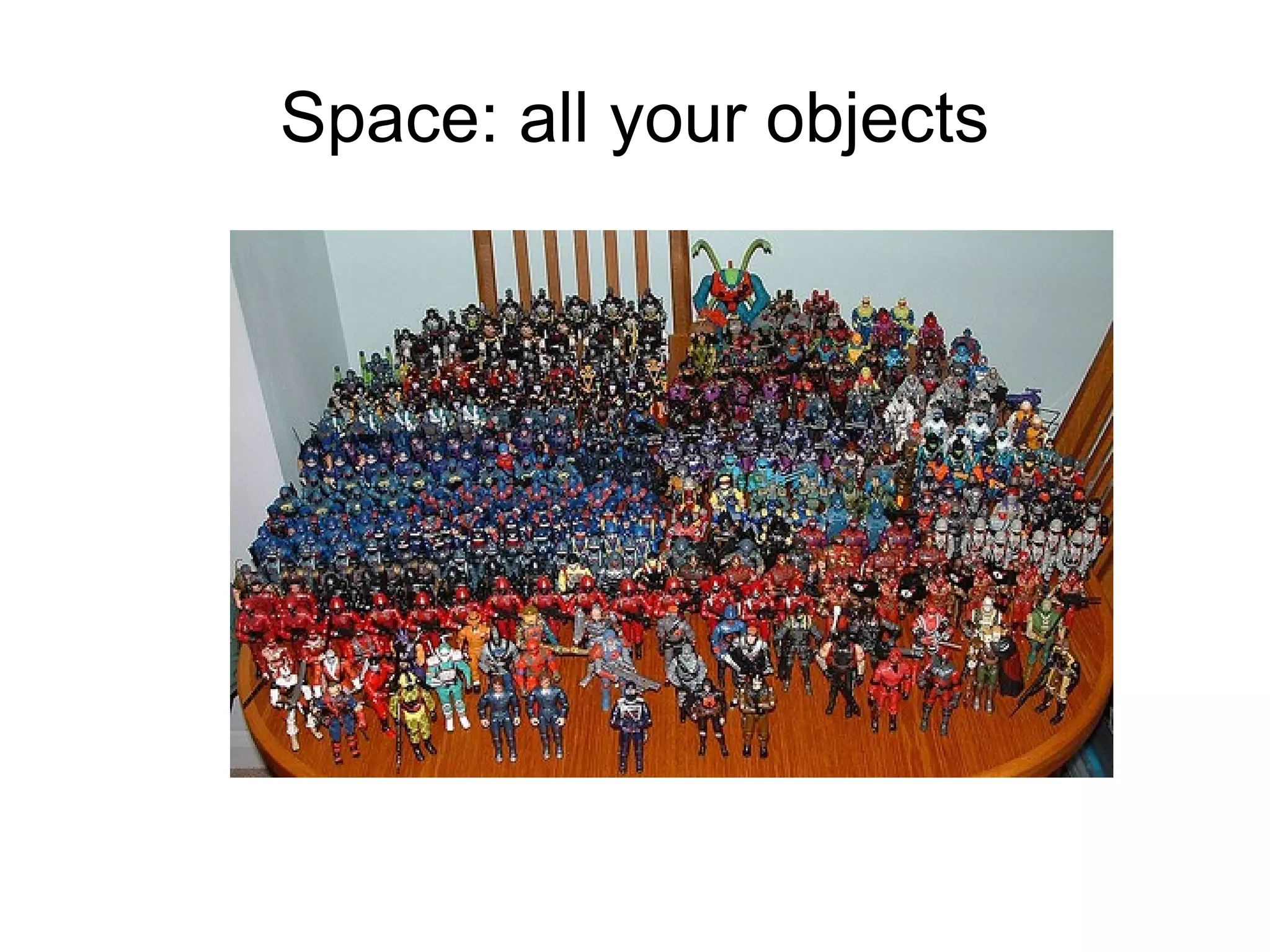
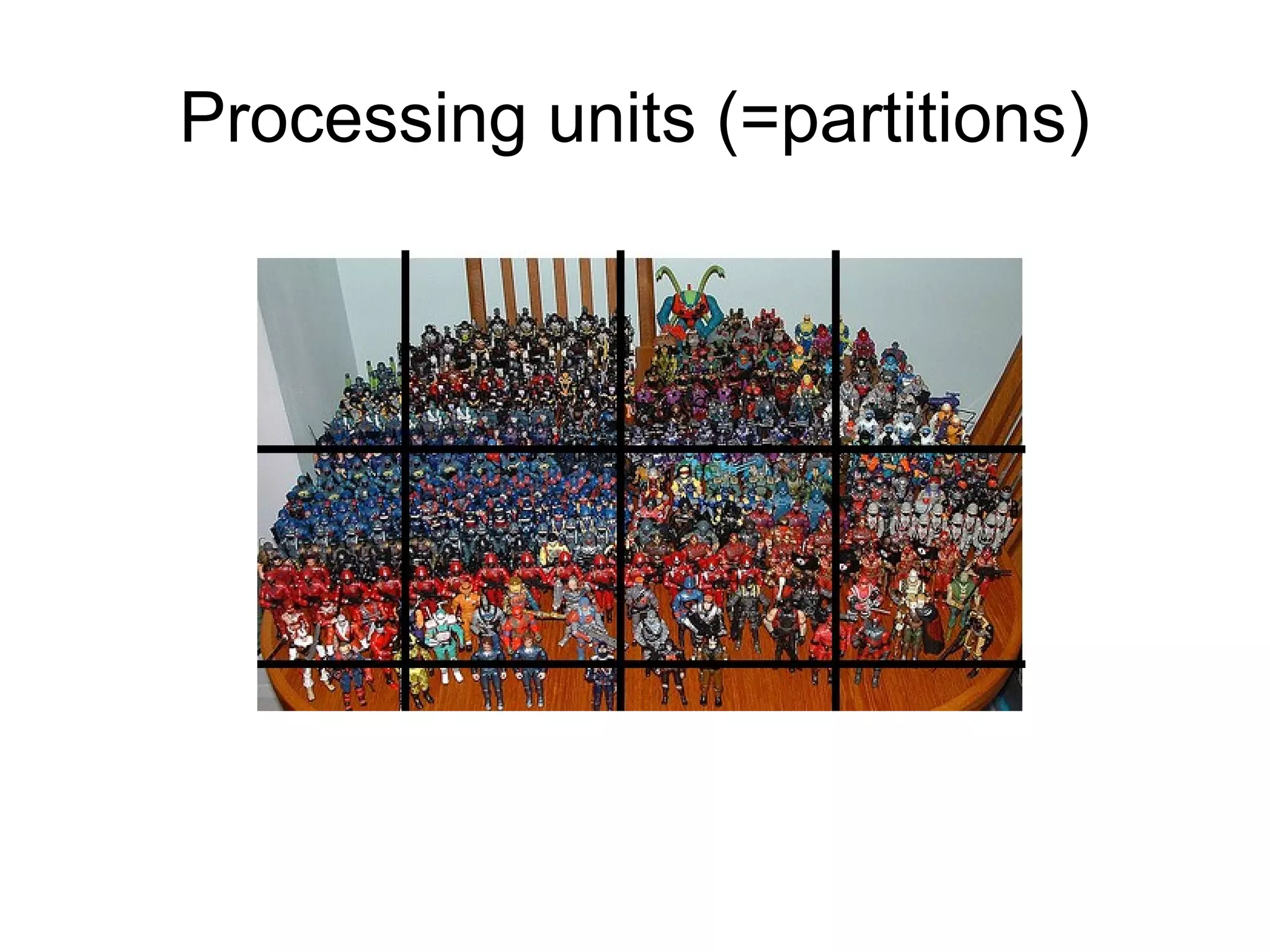
![GigaSpace data objects [SpaceClass] public class Message { [SpaceID(AutoGenerate=true)] public String MessageId {get; set;} [SpaceRouting] public String MessageType{ get; set;} ... }](https://image.slidesharecdn.com/spacebasedarch-090902155825-phpapp02/75/Space-Based-Programming-24-2048.jpg)
![Space Data Properties [SpaceID] is unique for the class in Space [SpaceRouting] determines the partition (defaults to space ID) Indexes speed up queries [SpaceProperty(Index=SpaceIndexType.Basic)] [SpaceVersion] for optimistic locking [SpaceExclude] are not serialized](https://image.slidesharecdn.com/spacebasedarch-090902155825-phpapp02/75/Space-Based-Programming-25-2048.jpg)
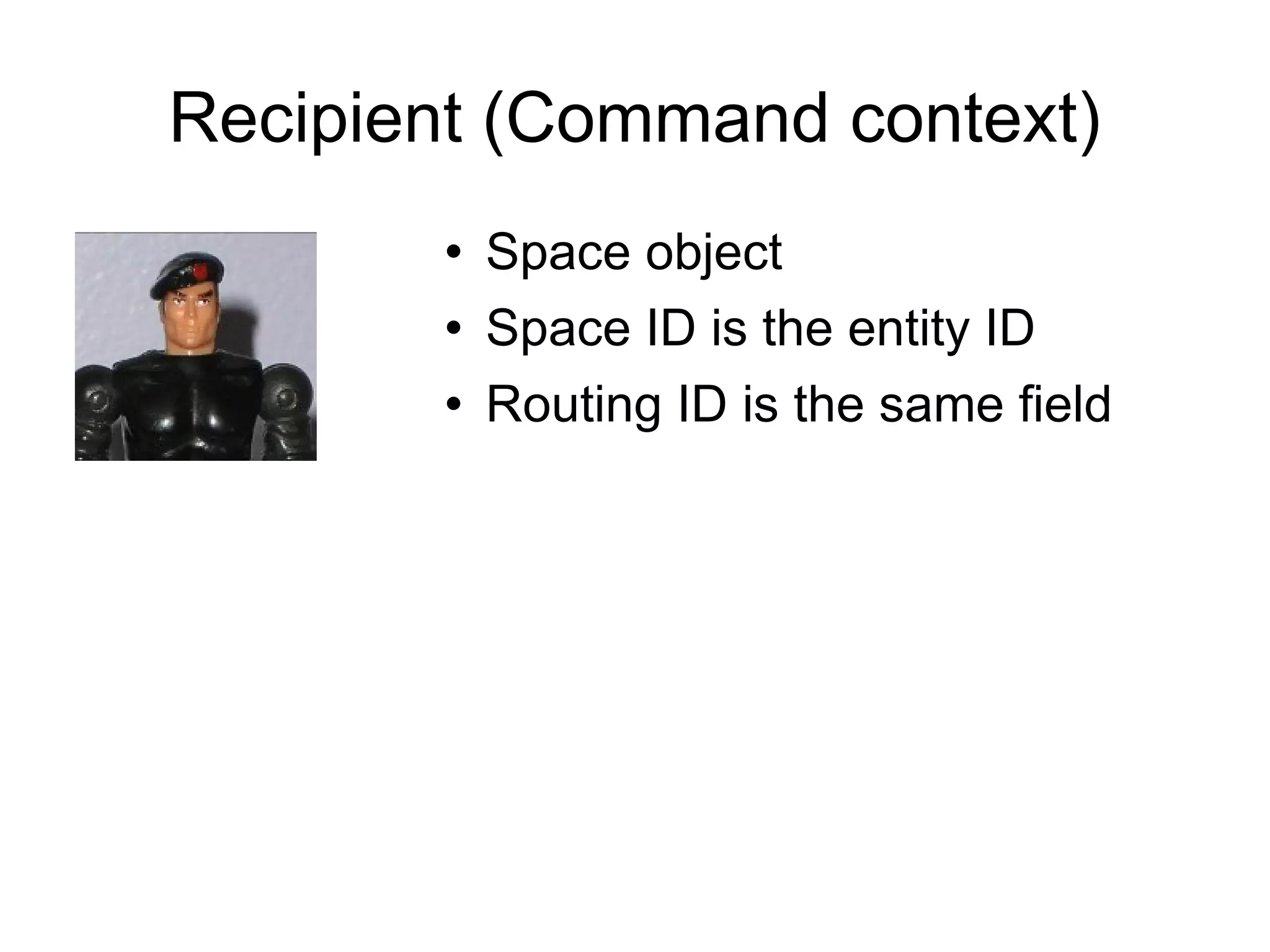
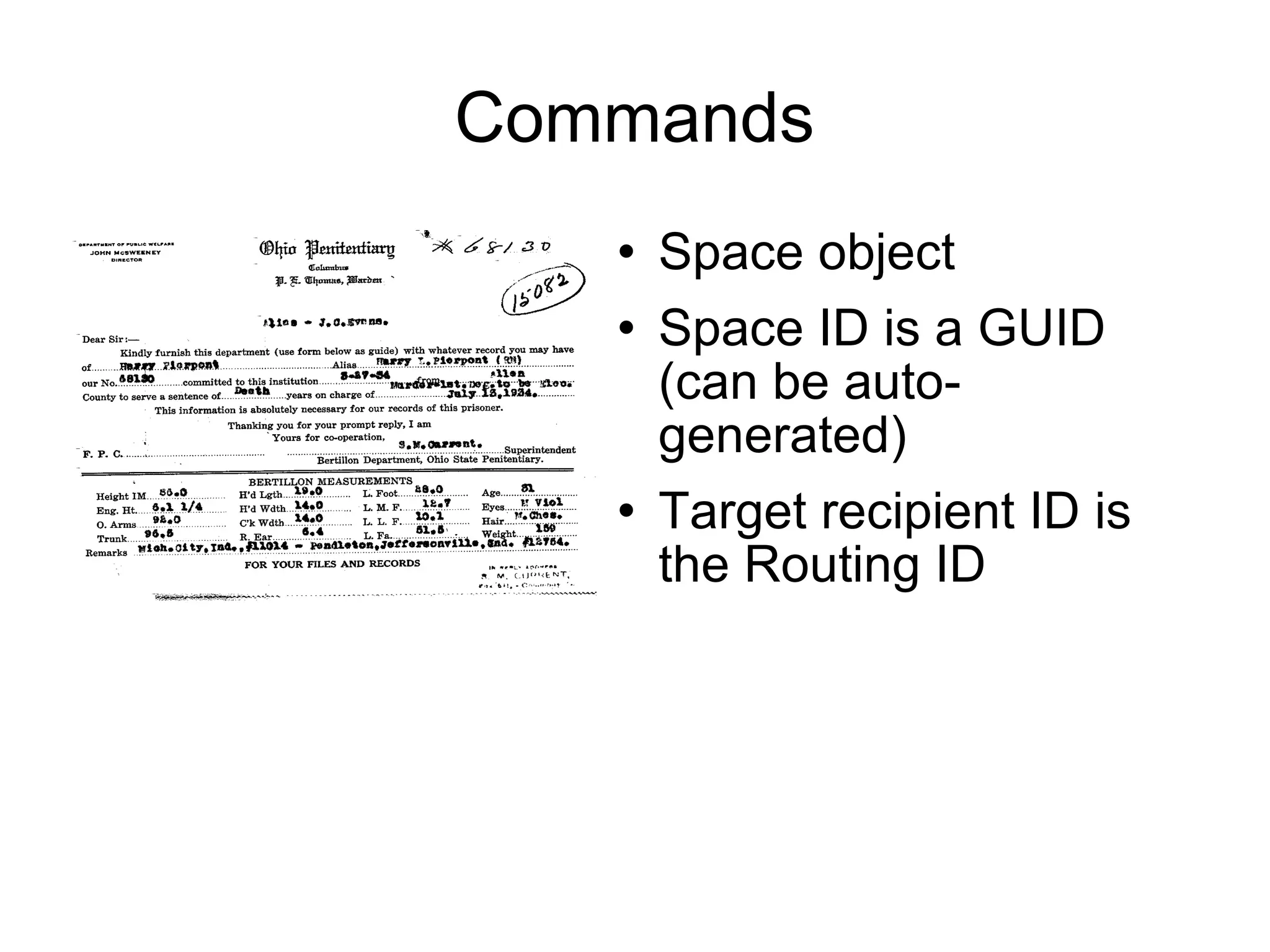
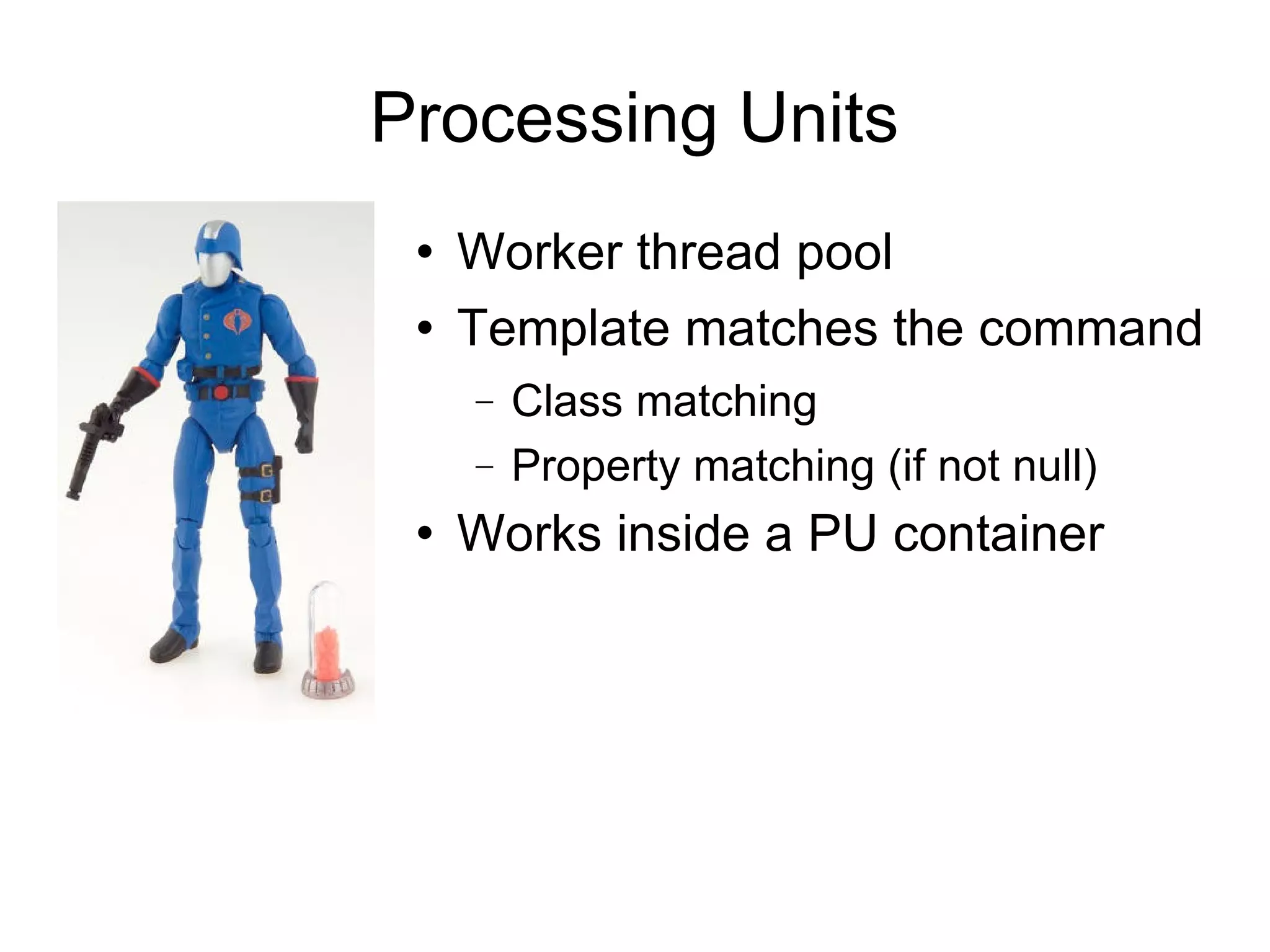
![Example processor [PollingEventDriven(MinConcurrentConsumers = 1, MaxConcurrentConsumers = 4)] internal class MessageProcessor { [EventTemplate] public Message TemplateForThisProcessor { get{ ... } } [DataEventHandler] public Message ProcessMessage(Message message) {.... } }](https://image.slidesharecdn.com/spacebasedarch-090902155825-phpapp02/75/Space-Based-Programming-29-2048.jpg)
